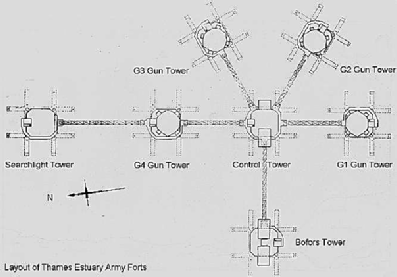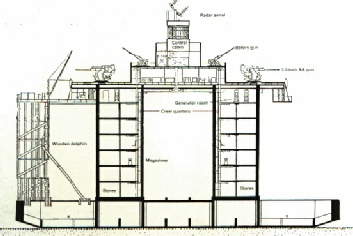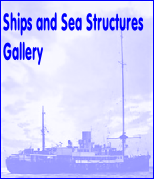© 2014-


Sea Forts History
Overview
In 1941, during World War 2, the British Admiralty and War Office decided that more anti-
During World War 2 the sea forts in the Thames Estuary were credited with shooting down 22 enemy aircraft, sinking one E boat, badly damaging another and destroying 20-
NAVY FORTS
These comprised a boat shaped reinforced concrete pontoon which carried two round towers topped by a steel deck housing armament and radar equipment. The forts were largely pre-
The two towers of the Navy forts each contained seven decks housing fuel, ammunition, water, generators and crew accommodation. The main deck had officers accommodation, while the Bofors deck had fresh and sea water tanks as well as ventilation equipment and the main gun defences. The Control Room was fitted with telephones, radio and early radar equipment linked by landline to a shore-
When each fort had been commissioned and equipped it was towed by tugs to its grounding position with a full compliment of crew aboard. Once in position the hollow legs were gradually flooded with seawater until they sank to the seabed in an operation taking less than half an hour.
There were 4 Navy forts in the Thames Estuary:-
- Roughs (never used by an offshore station but became the Principality of Sealand)
- Sunk Head (used by Tower Radio/Radio Tower)
- Tongue Sands (never used by an offshore station, although Radio Essex had some plans which never materialised)
- Knock John (used by Radio Essex/BBMS)
ARMY FORTS
The Army forts were designed to conform as far as possible to the format of a shore based battery, with emphasis on anti-
The fort complex as a whole comprised a central Control Tower surrounded by five further gun towers and a searchlight tower at the rear. Each individual tower had a base of reinforced concrete supporting four pre-
When built each tower was towed to its grounding position between two specially constructed barges and positioned on the sea bed by pumping compressed air into the hollow legs. The first tower to be put in position was always the Bofors Gun tower which could then protect the others as they were lowered. The whole operation, including the installation of the interconnecting catwalks took several days to complete.
There were three Army forts in the Thames Estuary:-
- The Nore (demolished in 1959 as it was considered a hazard to shipping)
- Red Sands (used by Radio Invicta, KING Radio and Radio 390)
- Shivering Sands (used by Radio Sutch and Radio City)
The Mersey Estuary Army Sea Forts were never involved in offshore radio broadcasting (they were demolished in the early 1950s).

Diagram showing an aerial view of the Army forts’ layout
(Click picture to enlarge)
(Drawing by J A Posford from The Construction of Britain's Sea Forts)

Diagram showing the layout of the Navy forts
(Click picture to enlarge)

A brief history of the Thames Estuary Forts and a visit to see them in 2011





Floor 2
Back to






A 1948 British Pathe newsreel film about the Thames estuary sea forts
Navy Sea Forts under construction

Army Sea Forts under construction



A presentation by Fort historian and author Frank Turner about the history of the Maunsell sea forts
A video from the World Of Warships about the history of the Maunsell sea forts, with particular reference to Red Sands Fort